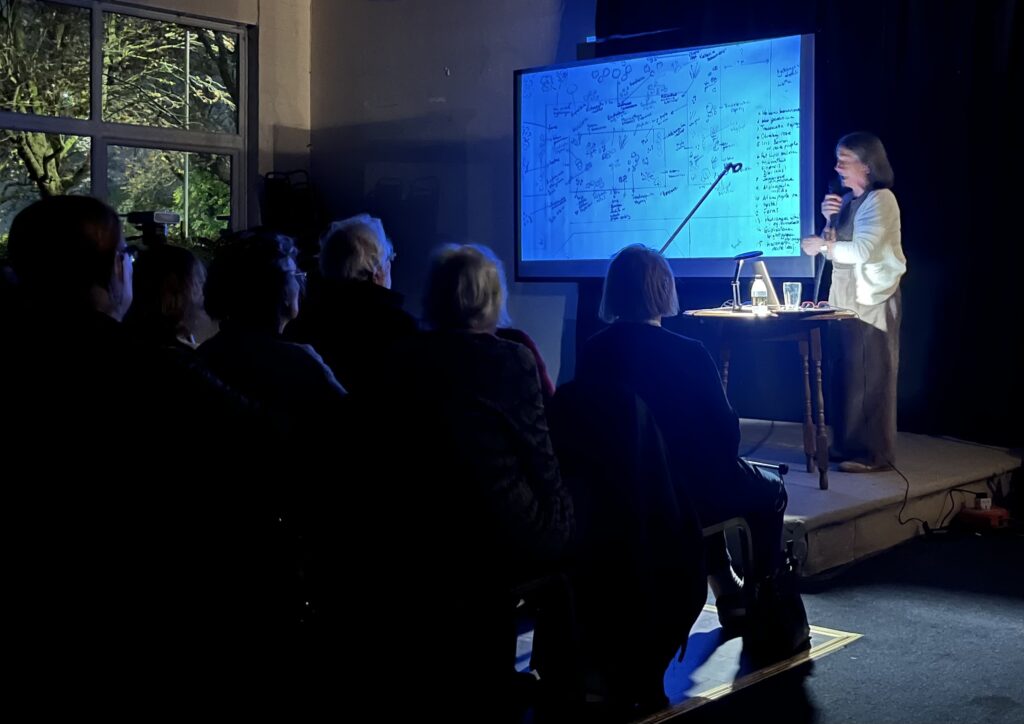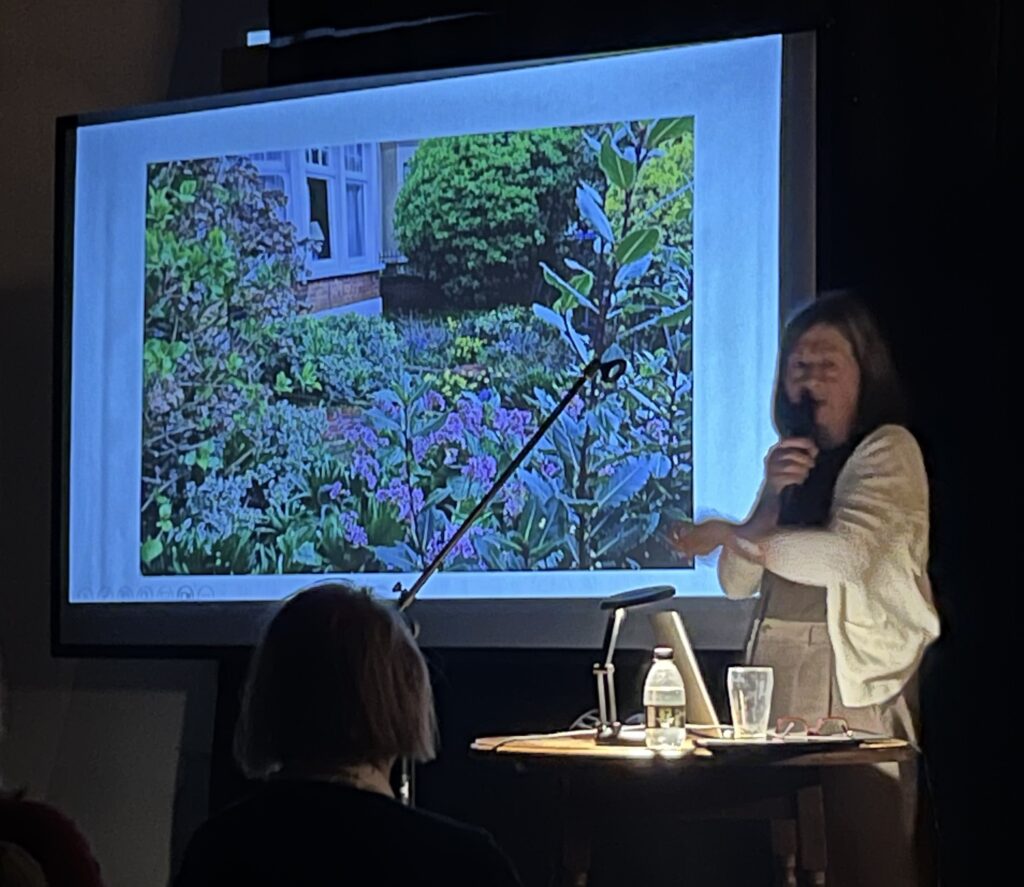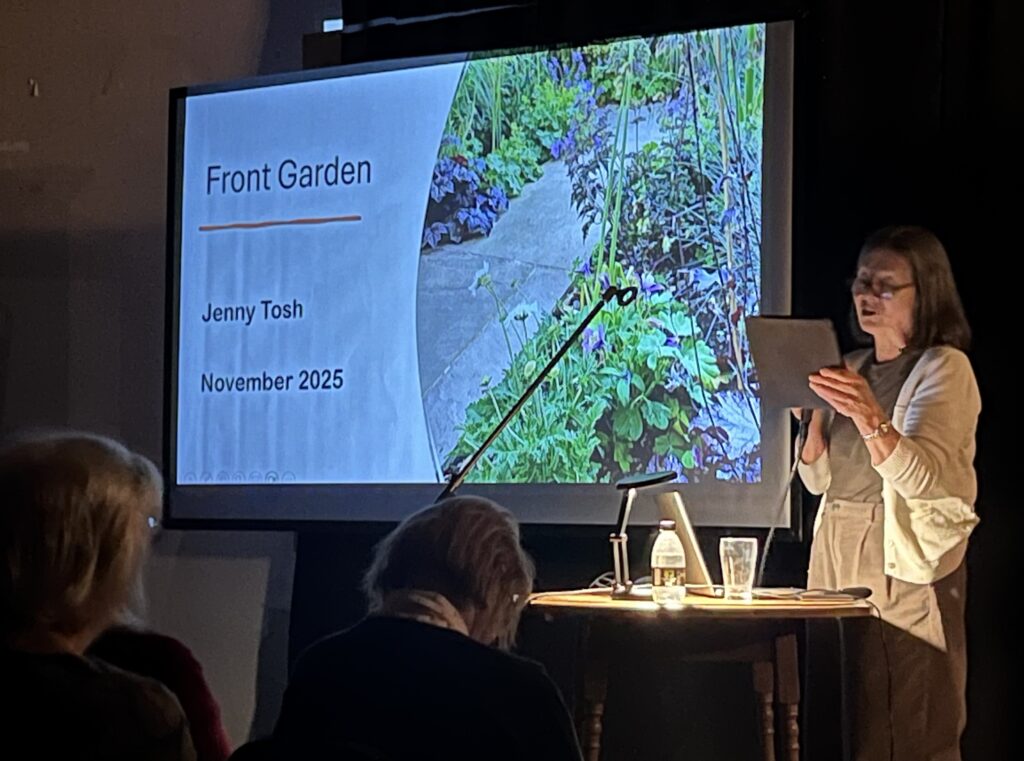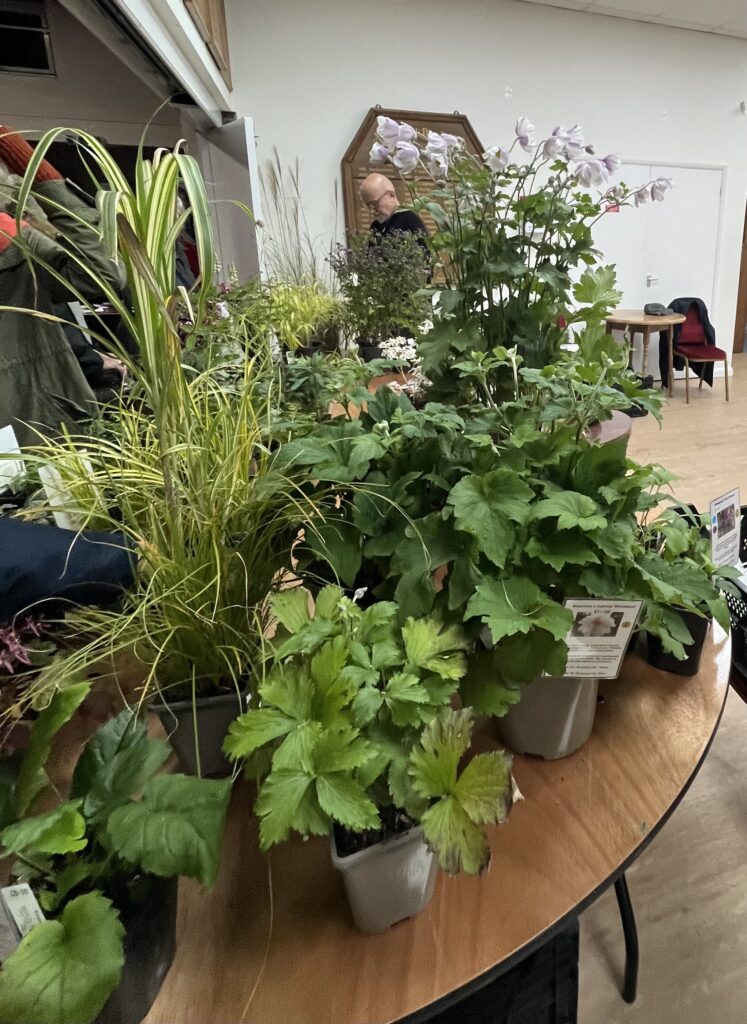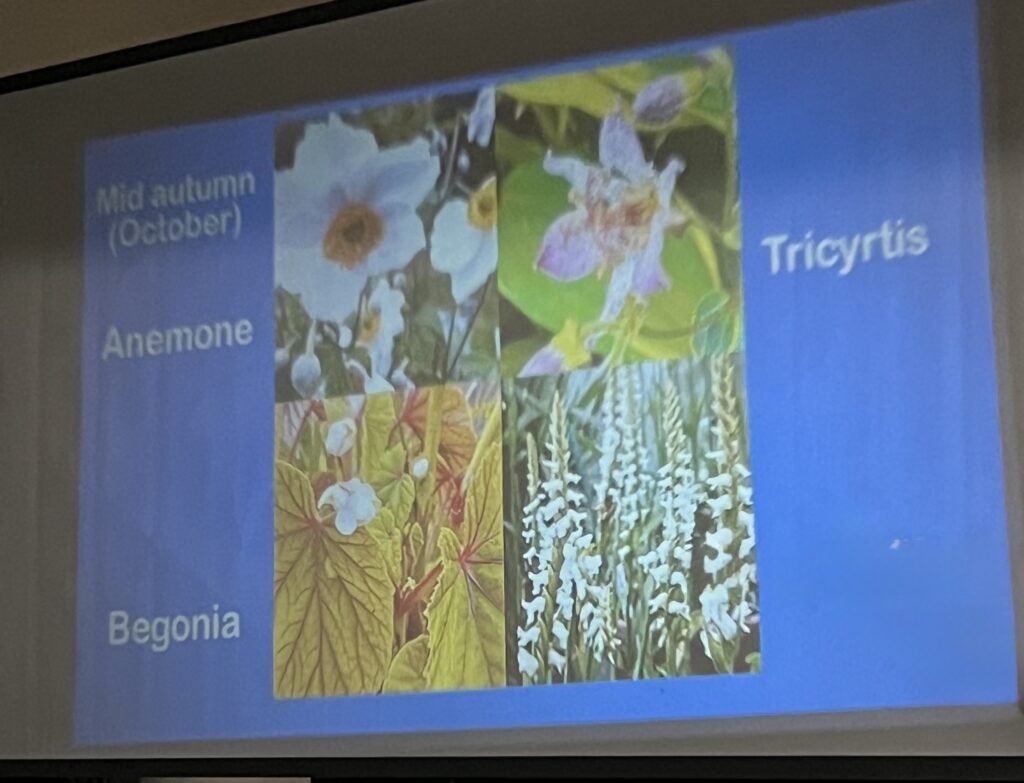The planned speaker for December’s AHS meeting was unable to come through illness so instead there was a very successful and well received members evening. As it was the Christmas meeting home-made mince pies – made by Janet Hayes – and mulled wine was served to all members with many glasses being ‘topped up’ during the evening. Ruth Martin gave a talk on 12 favourite Christmas plants – talking about the three outdoor plants, Holly, Ivy and Mistletoe. She also spoke about some typical indoor Christmas plants like Poinsettia, Amaryllis & Christmas Cactus. Photos from the AHS photoshare Whats App group were used to illustrate Christmas Cactus and Cyclamen. Members joined in to give additional advice and information about each plant.
Following that talk, Sonya Batra gave a demonstration on how to make a Festive floral arrangement using natural evergreen foliage with some added silver and lovely candles to make it suitable for putting on a mantlepiece or side table. Several members have said how they were inspired to go home and make a similar decoration. To finish the evening Jenny Tosh provided a specially prepared Christmas Quiz with questions on Plants and Christmas. This was won by Siobhan Brown. Jenny generously provided prizes for the winners of the Quiz. As well as prizes for the Quiz there were also prizes for the best Christmas jumpers, which were judged by Judith McCann. The best jumper prize winners were Jan Tallis, Alison Tetlow and Janet Daniel.
Festive Greetings to all our members and friends.


